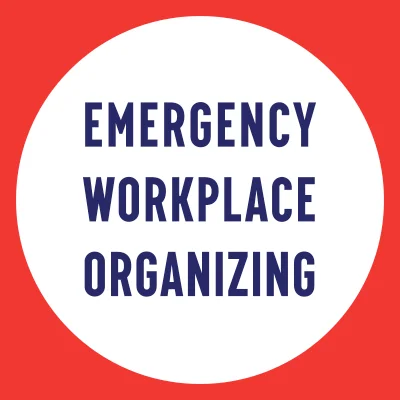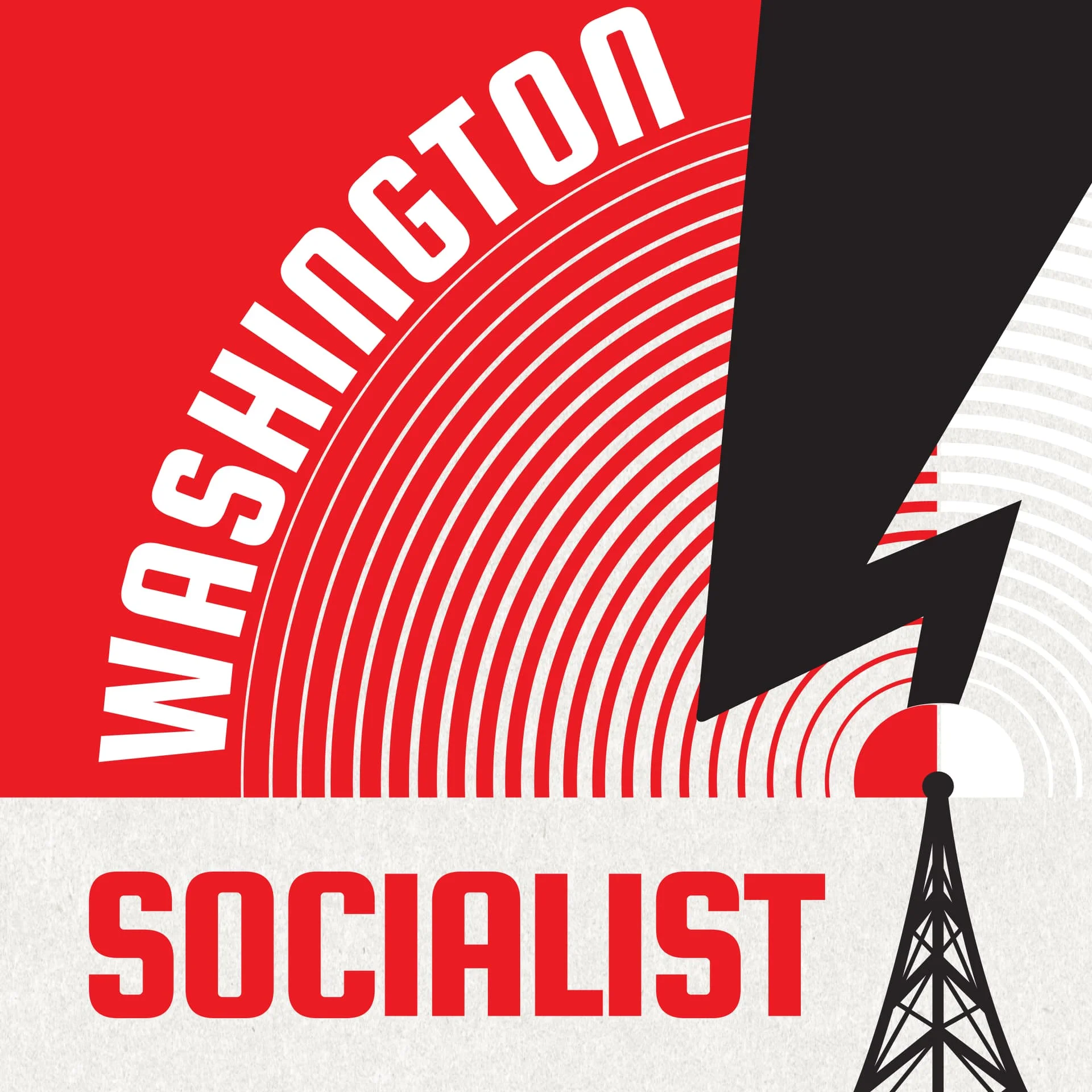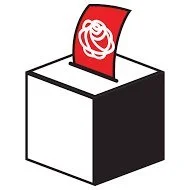

Do unions protect bad employees?
No — but just-cause rules protect unionized workers from unfair firing and discipline.
The post Do unions protect bad employees? appeared first on EWOC.


DSA's 2025 National Convention: Red Slate Reflections


Hyperlocal, Hyper Effective: ANCs and Working-Class Governance


The Legend of David Schwartzman


Thinking of going to DSA National Convention? Here’s what to know!


Organizing Greenbelt against fascism w/ Frankie Santos Fritz


Retail Rent: A Leech on Our Communities


Endorsement: Frankie Fritz, Greenbelt Mayor & City Council
DSA is proud to endorse Frankie Santos Fritz for Greenbelt Mayor & City Council!
Frankie is a longtime local organizer and branch leader with Metro DC DSA. He is a proud member of a union family and plans to introduce a collective bargaining ordinance to cover the city workforce. Frankie is also a member of the Greenbelt Home Inc housing co-op and is championing laws to empower tenants who wish to convert their communities to cooperative or social housing.
Frankie plans to expand rent stabilization protections to cap annual rent increases with the rate of inflation. He is dedicated to supporting federal workers who are under attack from DOGE and the federal administration. His top transportation priority for the next term would be getting the long-promised Capital Bikeshare station built at the Greenbelt Metro Station and getting it stocked with numerous E-Bikes.
Check out the rest of Frankie’s campaign priorities!

Who are our other candidates?
DSA’s Nationally-endorsed socialist candidates are running for local office in Washington, Minnesota, Colorado, Michigan, New York, New Jersey, Maryland, and Massachusetts!
Our candidates are incredible fighters for the working class, championing rent stabilization and higher minimum wages, while also protesting ICE’s human rights violations.
This year, we launched a rotating fundraising slate and held phonebanks to foster cross-chapter solidarity. And we’ve raised over $100,000!


Onward, Not Sideways: A Socialist Case for Voting Yes on Prop 50

In an ideal world, our ballot wouldn’t contain a measure like Proposition 50. We would have a political system built on true proportional representation, where the maps are drawn by and for the people, not by a political class to serve its own ends. But this is not that world. For decades, corporations and billionaires have spent enormous sums of money to rig our elections and consolidate their power, leaving us with a broken system that offers us two unpalatable options in a political game designed to keep the working class out of power.
Now, we are confronted with a clear and present danger: a coordinated, authoritarian project at the national level that seeks to rig elections and cement minority rule. In Texas, a partisan gerrymander is designed to steal congressional seats and consolidate power, with direct and devastating impacts on our communities—from attacks on labor rights to the ongoing assaults on immigrants.
This is a tactical moment that demands a tactical response. A "No" vote on Prop 50, while a symbolic stand against gerrymandering in all its forms, would be a unilateral disarmament in the face of an active assault on our democracy. This would be a “sideways” move. Sometimes we must fight fire with fire.
This is where we must move onward, not sideways. Our movement is about moving forward toward a just and equitable society, rather than getting distracted by lateral battles that don't advance our cause. A "sideways" move would be to lose focus on the primary threats to our communities, or to get caught up in a political game that doesn't serve our long-term interests. That is why our endorsement of a "Yes" vote is a pragmatic one, born out of a clear-eyed assessment of the stakes.
Passing Prop 50 is an essential step in stopping the advance of fascism in the United States. It will counter Republican-led rigging of elections in states like Texas and Florida and give us a tangible chance to fight back against the Trump and billionaire agenda.
Crucially, voting yes on Prop 50 does not disband or replace California's independent Citizens Redistricting Commission. The commission will remain in place and is set to resume its work after the 2030 census. This is a temporary, tactical measure that buys us time to continue organizing for a better world.
Beyond the immediate tactical gains, our endorsement of Prop 50 aligns us with the broader labor movement in California. Unions across the state recognize the critical importance of fair representation in protecting workers' rights and advancing a pro-labor agenda. When the working class stands united, we are a formidable force. Our vote for Prop 50 is a vote of solidarity with our labor comrades, strengthening our collective power against the forces of reaction and fascism. By standing with labor, we reinforce the understanding that the fight for fair elections is inseparable from the fight for economic justice and a socialist future.
We cannot cede this part of the fight against fascism and leave the center to lead it alone—they will fail. Only socialism can beat fascism. We are not just voting on maps; we are voting to protect our fellow workers, our immigrant neighbors, and our climate from a right-wing agenda that seeks to dismantle our unions, gut our social safety net, and accelerate climate collapse.
Vote yes on Prop 50, not as an act of faith in the establishment, but as an act of tactical resistance. And then, let's get back to the real work of building power from the ground up, for a political system that truly serves the many, not just the few.
Fight back California! Onward and not sideways!


Labor 101: Socialists and the Labor Movement

Federal workers’ union rights have been terminated in the largest union-busting scheme ever. The President of the United Auto workers is calling on unions to prepare to strike together on May 1, 2028. The Trader Joe’s Union released an official statement calling out Israel and the United States for starving Gaza. Coffee shops, retail stores and a salvage business in the East Bay are organizing unions. There is a lot going on in the labor movement.
Would you like more background for understanding all this? Why have socialist ideas and unions always been intertwined? Why does socialist strategy require strong unions? What do socialists advocate for in unions? How can I get involved in the labor movement? If these questions sound interesting to you, East Bay DSA is hosting another Zoom series of our “Labor 101: Socialists and the Labor Movement”. It’s a four-session discussion/reading group designed for DSA members and friends interested in discussing these questions. The readings are short; the emphasis is on discussing key questions. The series was created for those who don’t know a lot about the labor movement, but others are welcome.
We have offered the series many times in person: last spring we had our first Zoom series. DSAers attended from around the state, from Humboldt County to Kern County to Los Angeles County, as well as from the East Bay— it’s great to feel bigger than each of our chapter/city worlds. Participants included people involved in community organizing, people interested in organizing their workplace or industry, people who are in union jobs and wanted to talk about socialist strategy, and people who just wanted to know more. If you’re doing something like this in your chapter, or would like to, you would be especially welcome.
We will be meeting on Thursdays from 6:00 to 8:00 pm on October 30 and November 6, 13 and 20. Sign up here and we will send a Zoom link and a list of readings. Questions may be directed to David de Leeuw.